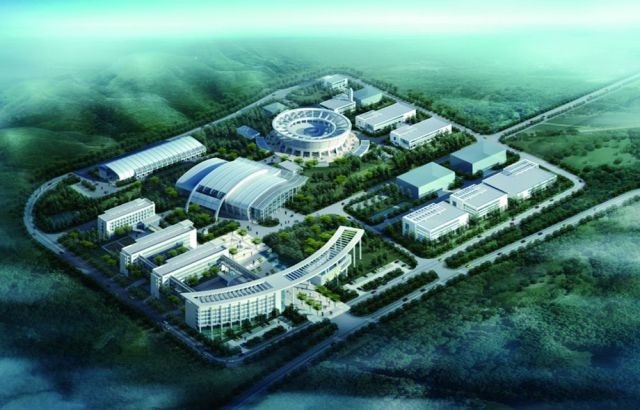China Spallation Neutron Source celebrates its groundbreaking
Dongguan, an economically booming town in Guangdong Province, hosted a grand groundbreaking ceremony of the China
 |
|
groundbreaking ceremony (photo by SUN Zifa, China news agency) |
In his opening remarks, Prof. BAI Chunli, President of the Chinese Academy of Sciences (CAS), expressed his warm welcome to the distinguished guests and his hearty thanks to them for their strong support for the CSNS. “I believe the CSNS Project will achieve a full success with the support of the central government and Guangdong Province, as well as the efforts and wisdom of the scientists”, remarked Bai in his speech at the ceremony.
State Councilor LIU Yandong congratulated on the groundbreaking and commented that the construction of CSNS in Guangdong would be of strategic importance to the scientific research in China, and its geographical location would further rationalize the general layout of the China's mega-science facilities, giving a new impetus to the sustainable development of basic and applied research capacities in south China.
As a key mega-science facility, the 1.67 billion yuan CSNS Project was approved by the central government in 2005 and has been listed in the National Long- and Medium-term Plan for S&T Development. According to the blueprint of the CAS-Guangdong cooperation, the facility will take seven years to complete with financial support from both the central government and the local governments, and it is intended to start commissioning in 2016, and operation in 2018. CSNS aims to be a world-class facility for a new generation of neutron sources, which is characterized with high-flux, broad-wavelength, safety and efficiency.
 |
| floor plan of CSNS layout |
CSNS mainly consists of an H- linac and a proton rapid cycling synchrotron. It is designed to accelerate proton beam pulses to 1.6 GeV kinetic energy at 25 Hz repetition rate, striking a solid metal target to produce spallation neutrons. The pulsed-beam feature allows studies not only on the static structure but also the dynamic mechanisms of the microscopic world.
For more information please click: http://csns.ihep.ac.cn/english/index.htm